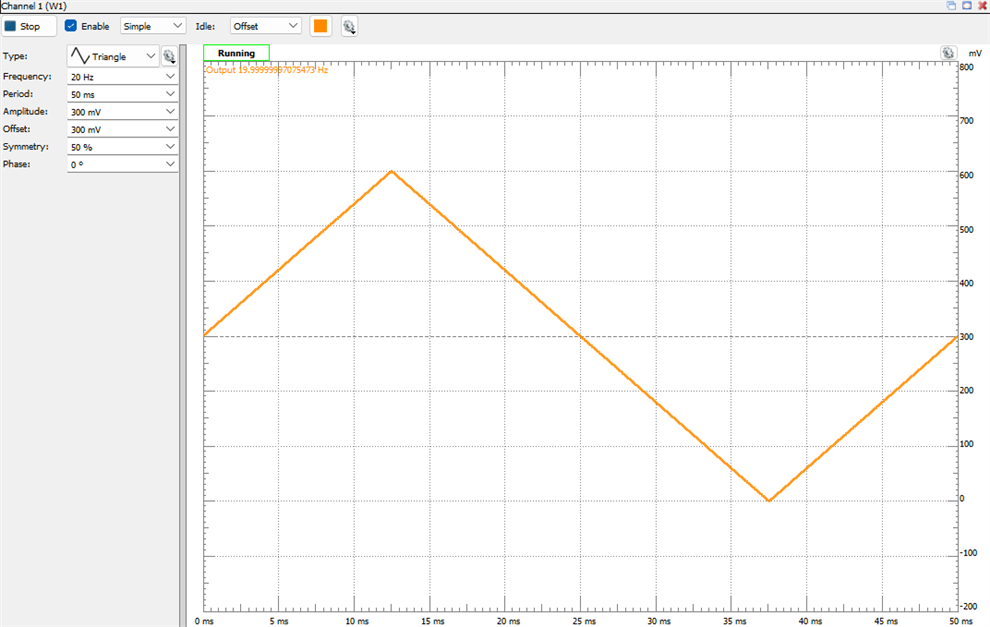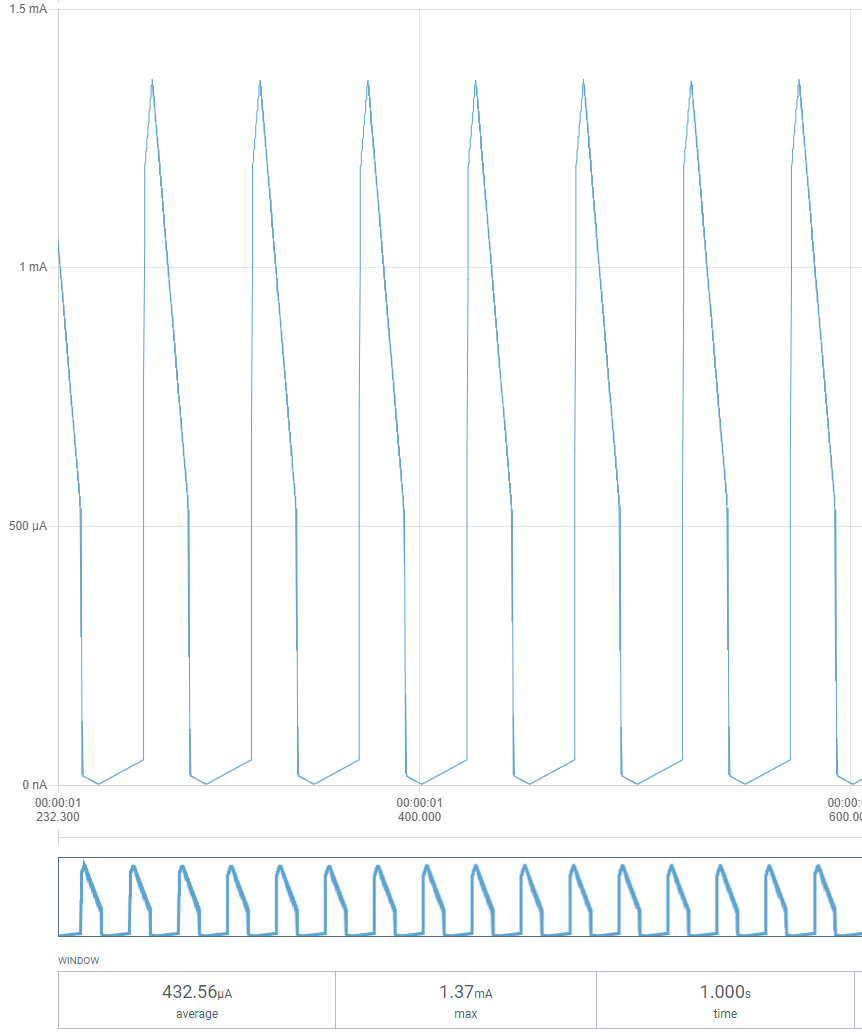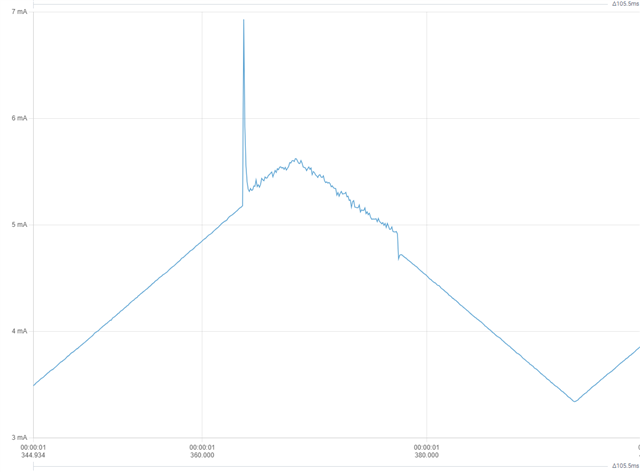Hi guys,
I'm trying to measure deep-sleep current of my application quite precisely to obtain a reference measurement to evaluate against for further improvements.
The setup is as follows:
I connect a battery in ampere mode. Here, I'm struggling between two ways of doing this (which yields approx. a factor 3-4 of difference):
The PPK2 is connected to my laptop as the only USB device and the laptop-charger is not plugged in.
In setup (1), my deep-sleep currents measure approx. average 384 uA (10ksps) @ 10 sec:
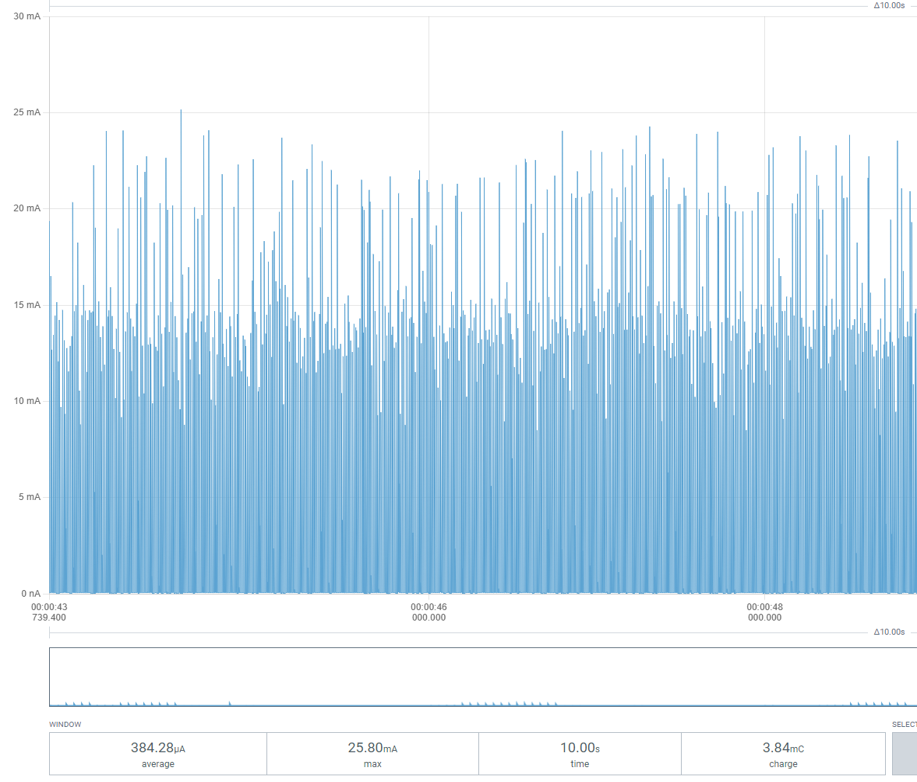
Zooming in, noticing periodic transients: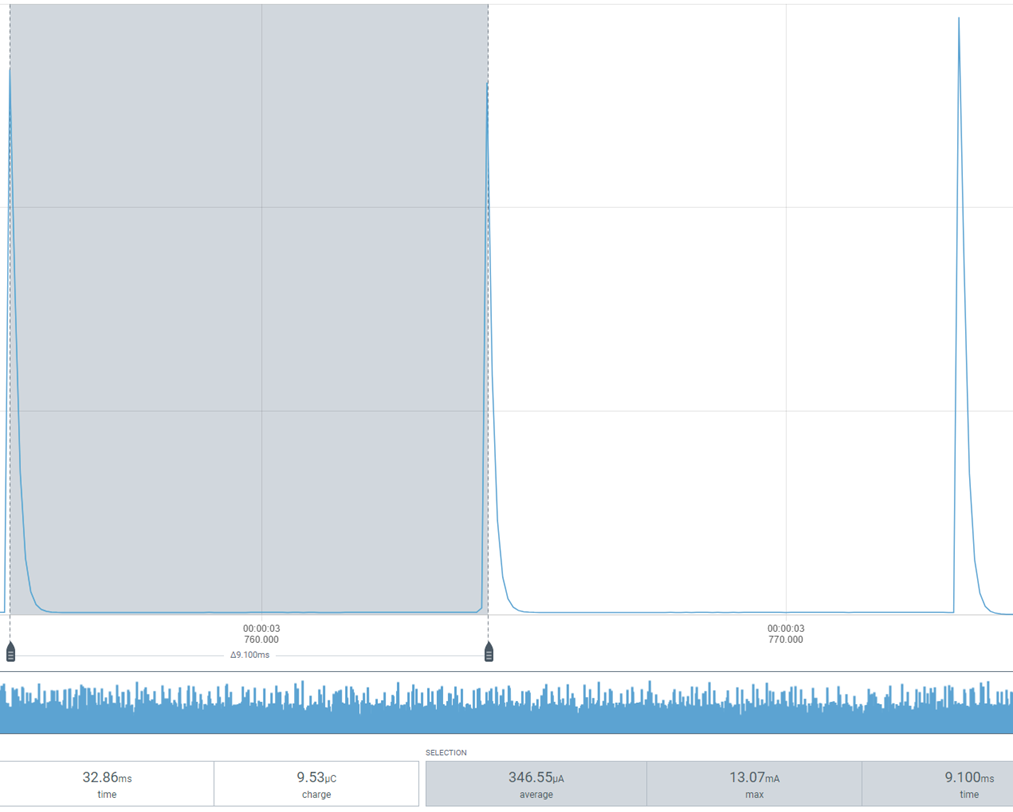
The frequency of these harmonic transients to occur changes from DUT to DUT, so might be a HW issue (ground bouncing or so) in there.
Nevertheless, if I (everything else being equal), removes the GND from the PPK2 so only the hot wire goes through the PPK2, and then connects GND from battery -> GND on DUT (setup 2), then these harmonic transients (same frequency) are much less excitated and the avg. deep-sleep current falls to ~109 uA: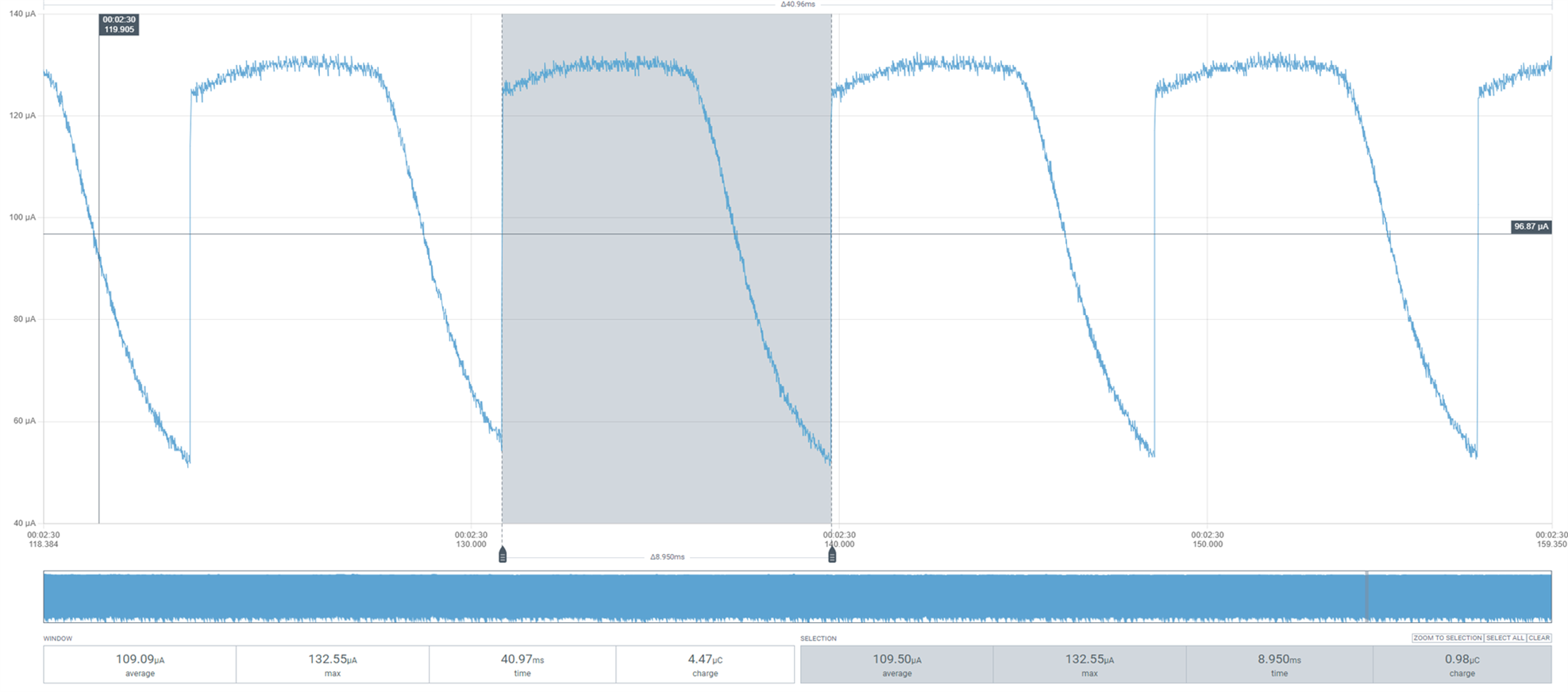
So this is a significant difference. I have also tried in source mode, but this generally yields a result of ~40 uA below configuration (2).
It seems to be a problem only connected to my DUT, or just a dynamic load. Measuring on a precision resistor yields more or less the same result.
Also, in configuration (2), I get a burden voltage of such significance that my application is not able to wake-up from deep sleep when intended to.
So I guess the primary question is; how do I assure the most precise output of my PPK2?
Can anyone me point me in the right direction? I have found some patterns of which I have a hard time concluding on, so any advice is very much welcome!
Have a nice weekend,
Br Daniel



